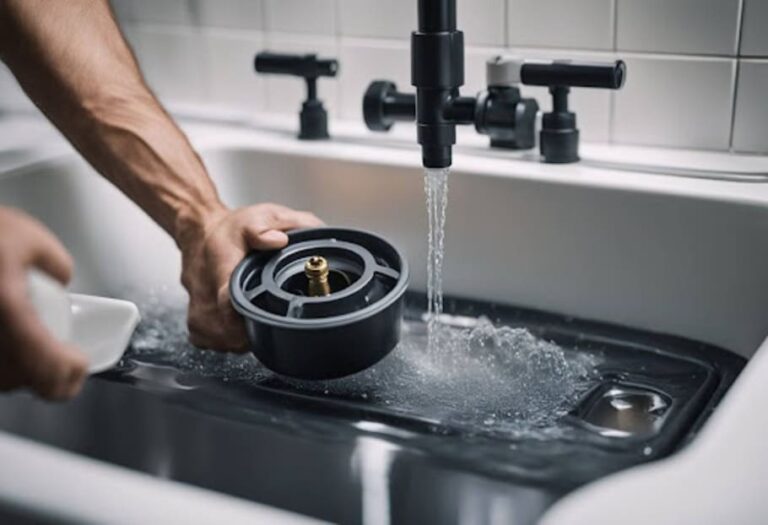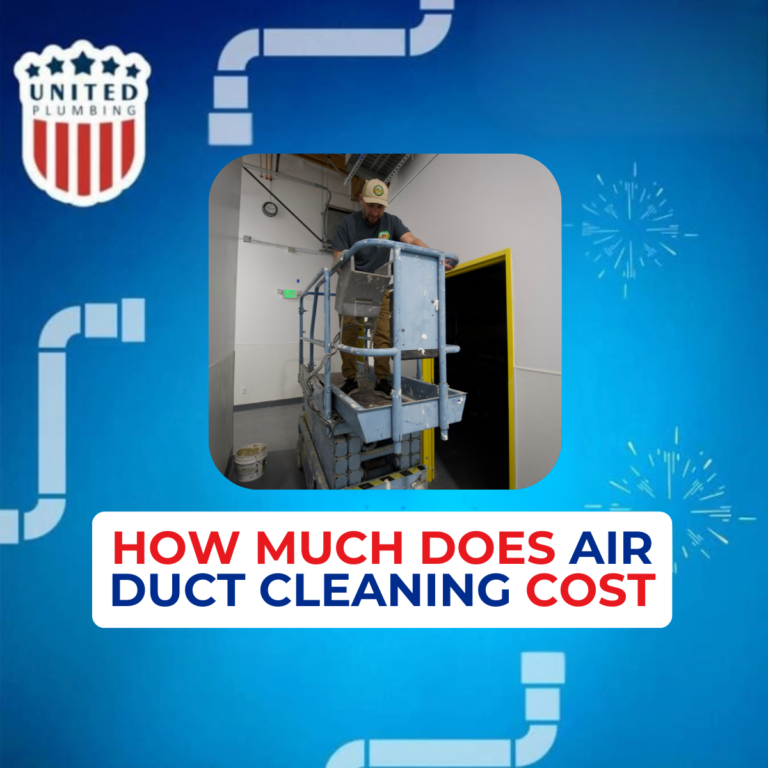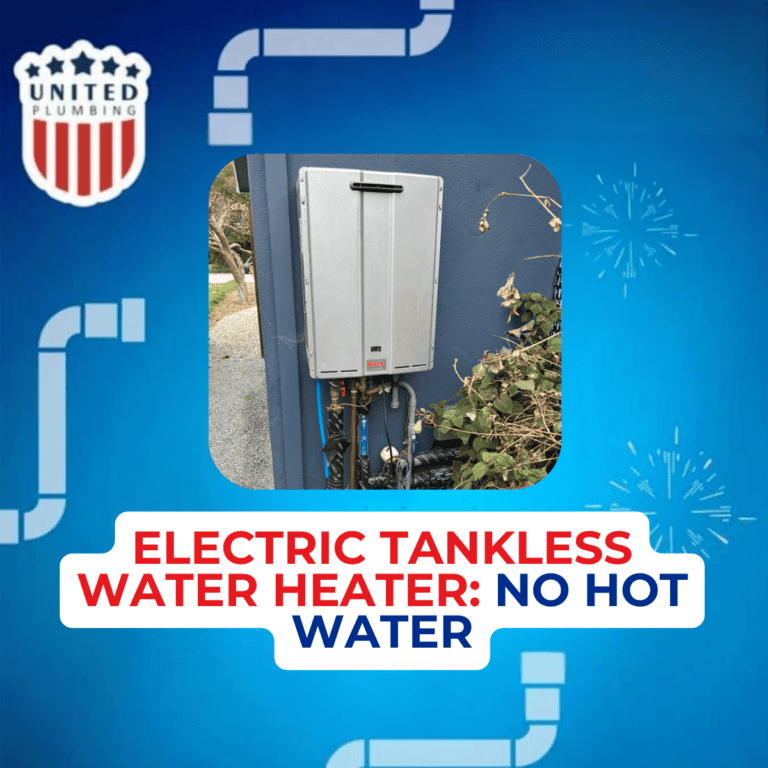FIVE-STAR TEAM WARRANTY &
SAME-DAY SERVICE
Drain Cleaning, Clogged Drains Guide for Effective Unclogging
Keeping drains clean and free-flowing is essential for maintaining a healthy home environment. Many homeowners face issues with clogged drains, which can cause inconvenience and potential damage if not addressed promptly. Regular drain cleaning and knowing effective methods for unclogging drains can save time and money in the long run.
Clogged drains can occur due to various reasons, including the buildup of grease, hair, soap residue, or foreign objects that accidentally enter the plumbing system. Spotting the early signs of a clog, such as slow draining water or unpleasant odors, can help prevent more severe blockages. Understanding the causes and solutions for clogged drains ensures one can take appropriate actions to keep their plumbing system in optimal condition.
Unclogging drains can be tackled with several methods, ranging from simple DIY fixes to professional services. Using a plunger, a plumber’s snake, or even a mixture of baking soda and vinegar are common household remedies. For more stubborn clogs, it may be necessary to call in a professional for thorough drain cleaning to restore normal functionality.
Understanding Drain Clogs
Drain clogs occur due to various reasons and affect different types of drains in specific ways. Proper identification and preventive measures can help manage these issues effectively.
Causes of Drain Blockages
Blockages in drains usually stem from common household debris such as hair, grease, and food particles. Fatty substances like grease can congeal within pipes, solidifying to cause blockages.
Other materials such as soap scum and coffee grounds contribute to slow drains by creating a residue on the inner surfaces of pipes. In kitchens, improper disposal of waste into sinks results in clogs.
Outdoor blockages may be caused by tree roots infiltrating older pipes, seeking moisture and nutrients, which can entirely disrupt water flow.
Types of Drains and Common Issues
Kitchen sinks and garbage disposals typically suffer from clogs due to food debris and grease accumulation. Bathroom drains such as showers and bathtubs often face blockages from hair and soap scum.
Toilets can become clogged with non-flushable items or excessive amounts of toilet paper. Each type of drain encounters specific challenges, necessitating tailored approaches for unclogging and maintenance.
Preventative Measures
To prevent drain clogs, regular maintenance is essential. This includes using a strainer to catch hair and food particles before they enter the drain.
Periodically flushing the drains with hot water and dish soap helps dissolve accumulated soap scum and grease. Avoid disposing of grease and coffee grounds down the sink, and use baking soda and vinegar as a natural cleaning method.
Tools and Chemicals Used for Unclogging
Common tools for unclogging drains include the plunger and the drain snake or auger.
A plunger can create suction to dislodge blockages, while a drain snake physically removes debris. Chemicals such as drain cleaners offer a quick solution by dissolving the buildup, but they need careful handling due to their caustic nature. Incorporating boiling water in regular maintenance can also help.
Pros and Cons of Drain Cleaning Methods
Mechanical tools like plungers and drain snakes are effective and environmentally friendly but may require skill to use correctly.
Chemical cleaners provide quick results but pose a risk of damage to older pipes and potential health hazards. Natural cleaners like baking soda and vinegar are safe but may not be effective for severe clogs.
When to Call a Professional
Persistent clogs, repeat blockages, or signs of larger plumbing issues signify the need for a professional plumber.
A professional can assess whether the clog is due to serious issues such as tree root infiltration or problems with the septic tank. Early intervention by a professional can prevent larger, costlier repairs and ensure proper drainage function.
Step-by-Step Drain Clearing Guide

This guide covers several methods to address drain issues, including initial assessment and various unclogging techniques.
Initial Assessment
Before attempting to clear a drain, inspect the type of clog. Common causes are hair, soap scum, food debris, or grease. Identifying the clog helps in choosing the right method to remove it. Check if it’s a slow draining issue or a complete blockage.
Examine the drain and consider the possible sources of the clog. Use a flashlight to get a better view inside the drain. For bathroom sinks, remove any pop-up stoppers and clean them first.
Mechanical Removal Techniques
Mechanical methods are often effective for physical obstructions. Start with a plunger. Secure it over the drain opening and create a tight seal. Push and pull for a few minutes to dislodge the clog.
If the plunger fails, try a drain snake or auger. Insert the snake into the drain, turning it to catch the debris. Slowly pull out the snake to remove the clog. Target areas include the p-trap and drain pipe, which may collect the most debris.
Natural Solutions for Unclogging
Natural methods use household items like baking soda and vinegar. Pour 1 cup of baking soda into the drain, followed by 1 cup of white vinegar. Cover the drain and let the reaction work for 15 minutes.
Afterward, flush with boiling water. For tough clogs, repeat the process. Alternatively, create a solution of hot water and salt. Let it sit for at least 30 minutes before rinsing with hot water to help break down the build-up.
Using Chemical Drain Cleaners Safely
Chemical drain cleaners can be effective but must be used responsibly. Always wear protective gear such as gloves and goggles to prevent burns. Follow the product instructions carefully.
Pour the chemical cleaner directly into the drain. Allow it to sit for the recommended time to dissolve the clog. Rinse thoroughly with cold water. Avoid mixing different chemical cleaners, as this can cause dangerous reactions.
Troubleshooting Persistent Clogs
For clogs that persist, check less obvious areas. Look at the clean-out plug to access and remove deeper debris in the drain pipe. The overflow opening in bathtubs may also harbor clogs.
Consider removing and cleaning the p-trap under the sink. Use a bucket to catch any water and debris when disconnecting it. If the clog remains stubborn, it may be time to contact a professional plumber.
Maintenance After Unclogging
Regular maintenance prevents future clogs. Use strainers in sinks and bathtubs to catch hair and food particles. Avoid pouring grease down the drain which can solidify and cause blockages.
Flush drains monthly with hot water to help clear soap scum and debris. Consider using a drain maintenance treatment to keep pipes clear. Regular cleaning of pop-up stoppers and garbage disposals will also aid in keeping the drains flowing smoothly.
Post views: 501
Latest posts

How Much Does Air Duct Cleaning Cost
If you’ve recently searched for “air duct cleaning near me” or “vent cleaning near me,” chances are you’re concerned...

Electric Tankless Water Heater: No Hot Water
Electric tankless water heaters offer convenience, space-saving design, and energy efficiency, but when there’s no...


If you still have questions or need advice, please leave a request and we will contact you as soon as possible
Need a plumber and got no clue where to start?
(408) 539-6936Facing a plumbing issue? Get a FREE in-person estimate and quick solutions from our skilled technicians, ensuring your home runs smoothly again!
